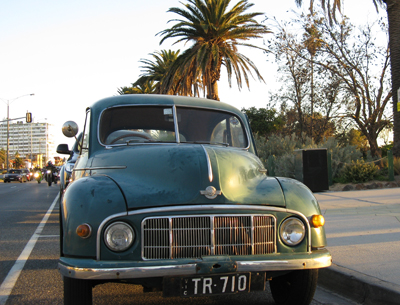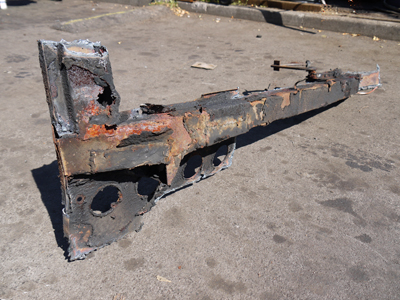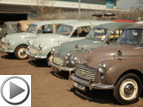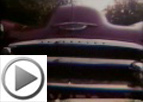Conservation
SHORT LIFE CARS
Modern pressed steel cars are built from thin gauge metal in order to reduce weight and cost. The engineering strength is in the total design. All sections and panels are integral and must be in very sound structural order for the whole bodyshell to be safe enough to survive serious impact in an accident.
When severe rust gets a hold, economic repair is impossible and the car has to be scrapped.
 LONG LIFE CARS
LONG LIFE CARS
The Morris Minor is a good example; its heavy gauge metal pressings and sections are individually strong and the overall strength of the bodyshell is 'over-engineered' or greater than it need be for basic safety reasons.
This means that individual rotted areas can be cut out and replaced with new replica sections without any distortion or weakening of the bodyshell. A reinstatement programme can be planned on a priority basis over a number of years, without endangering the overall strength and function of the car.
Our long term philosophy is that, provided a structural panel has enough strength in it to protect the driver and passengers safety, no temporary repair work should be carried out by 'professionals' because this is an expensive waste of time, and will not prolong the basic strength of the panel. If owners want their cars to 'look nice' they should fill and touch in the paintwork themselves until the rusty panel needs changing.
As illustrations of short and long term solutions and their cost effectiveness, we will look at 2 panels.
An upper body panel the front wing 1, and an under body panel the front chassis leg 2.
 1. FRONT WING
1. FRONT WING
The majority of Minor owners ignore simple body maintenance, and over the years, salt impregnated road dirt and mud thrown up by the tyres, collects behind the rear end of the wing and around the headlight bucket at the front. This gradually eats its way through the protective finishes until it 'bubbles' through surface paint, and eventually causes unsightly rusty holes.
The standard treatment for this is for a garage to either cut out the rusty areas and weld in a patch, or use fibre glass and body filler to build up the surface again.
This is then given a couple of paint coats and looks 'like new' for about 12 months until the damp gets through again from the back and the whole process repeats itself from the point that rust first appeared. This painting process will go on until the wing finally collapses around its light bucket and rots away at the bottom rear end to become a MOT hazard. It is not uncommon to find that a terminally rusty wing may have had as much as £80 spent on keeping it looking nice during this period. This is a complete waste of time and money.
A new long life wing will last over 15 years and costs under £410 plus VAT to supply fit and paint.
 2. FRONT CHASSIS LEG
2. FRONT CHASSIS LEG
As this vitally important structural box section develops serious internal rust, it expresses itself in structural cracks and holes in the outer surface. Over five years from the first hole showing, it is common for as many as 4 patches to have been welded on top of the rotting member without making it stronger. Cost on average over this period £245 plus VAT.










